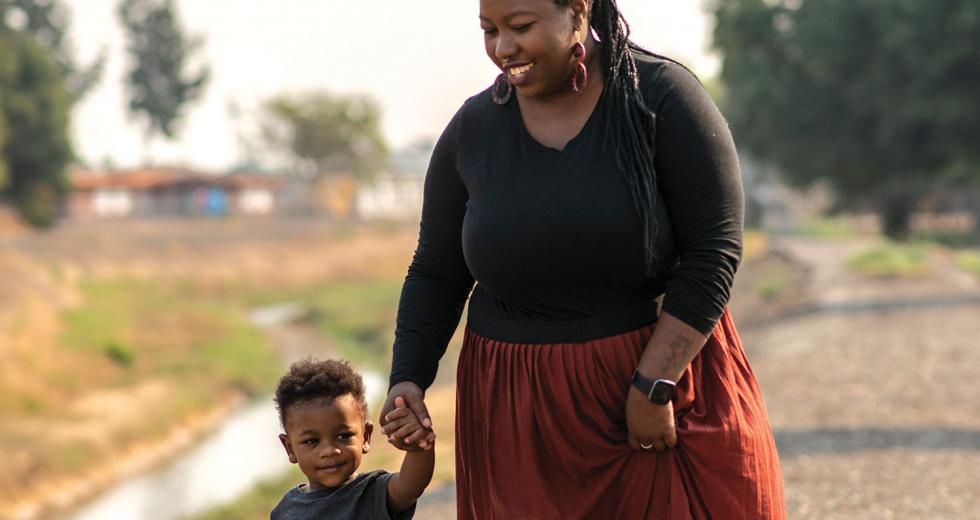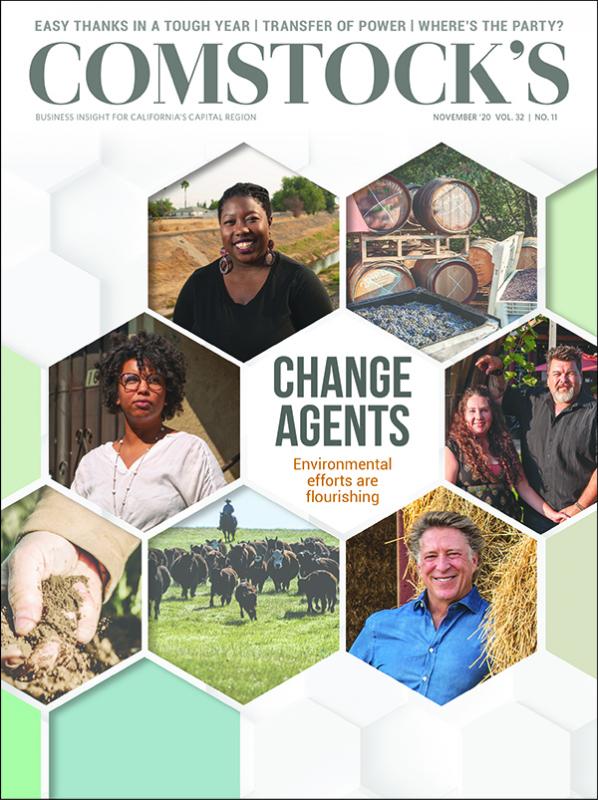In 2008, Nailah Pope-Harden had her hands full. Then 20 years old, she was attending Sacramento City College and working as a massage therapist when she learned that a group of investors proposed to inject and store 7.5 billion cubic feet of natural gas underneath about 700 homes, dozens of businesses and a park in her community in southeastern Sacramento.
The community sits atop Florin Gas Field, a natural gas reservoir roughly 3,800 feet below ground that Procter & Gamble and other companies had extracted gas from until depleting its supply in 1987. To many residents in her Glen Elder neighborhood and other nearby neighborhoods, the investors’ offer sounded good: Sacramento Natural Gas Storage would pay landowners to lease their underground property rights to store the gas, which the company would then withdraw and sell to the Sacramento Municipal Utility District and other big customers.
Hundreds of homeowners quickly agreed. But a draft environmental review found this type of facility posed a risk for fire, explosion and groundwater contamination, and residents, including Pope-Harden, started talking to one another about these threats and persuaded two law firms to take their case pro bono. On July 12, 2012, the California Public Utilities Commission voted 3-2 against the project, with one commissioner noting that never before had they approved a gas-storage project in such a densely populated urban neighborhood.
“It was huge. A lot of people describe it as like a David-versus-Goliath type of thing because we were one really small neighborhood taking on a gas company. … So it just really felt right. It felt good. It felt like our hard work paid off.”
Nailah Pope-Harden Cofounder, Red, Black and Green Environmental Justice Coalition
“It was huge,” Pope-Harden says. “A lot of people describe it as like a David-versus-Goliath type of thing because we were one really small neighborhood taking on a gas company. … So it just really felt right. It felt good. It felt like our hard work paid off.”
The battle was Pope-Harden’s introduction into organizing for environmental justice, which the Red, Black and Green Environmental Justice Coalition, a Sacramento group she cofounded with nine other activists, defines as “the basic right of people to live, work, go to school, play, and pray in a safe, healthy, and clean environment.” Widespread efforts to achieve environmental justice in Sacramento have been gaining momentum, but proponents say the efforts will only be successful if they are inclusive and equitable, encouraging community members to speak for themselves, and elected officials, city planners and other decision-makers to actually listen.
While the environmental-justice movement emerged in the United States in the 1980s, it has taken on more urgency in recent years as the Earth’s average temperature has warmed about 2 degrees Fahrenheit since 1880, with most of the increase happening since 1975. A seemingly small amount of extra heat translates to large-scale shifts in global weather patterns, and scientists agree that the more extreme weather events caused by climate change — heat waves, droughts, heavy rainfall, wildfires, hurricanes — will exacerbate societal disparities, imperiling already-vulnerable populations the most.
A History of Disparity
On Aug. 13, about 20 people joined the virtual town hall of the Red, Black and Green coalition (the name is an ode to the Pan-African flag), launched in late 2019 to formulate a unified voice on environmental-justice issues to influence public policy. Pope-Harden was there, joined by Jackie Cole, a community organizer and principal of Veritable Good who led the presentation. Simeon Gant, executive director of Green Tech Education and Employment, and Faye Wilson Kennedy, Bill Johnson and Tyrone Netters, three stalwart members of the Sacramento Area Black Caucus, were in attendance too.
Jackie Cole, inside her Midtown Sacramento apartment with her dog
Ollie, is a community organizer and principal of Veritable Good.
She is consulting on most of the big
environmental-justice-related projects in Sacramento, including
the Stockton Blvd Plan and the City of Sacramento’s 2040 General
Plan. (Photo by Ryan Angel Meza)
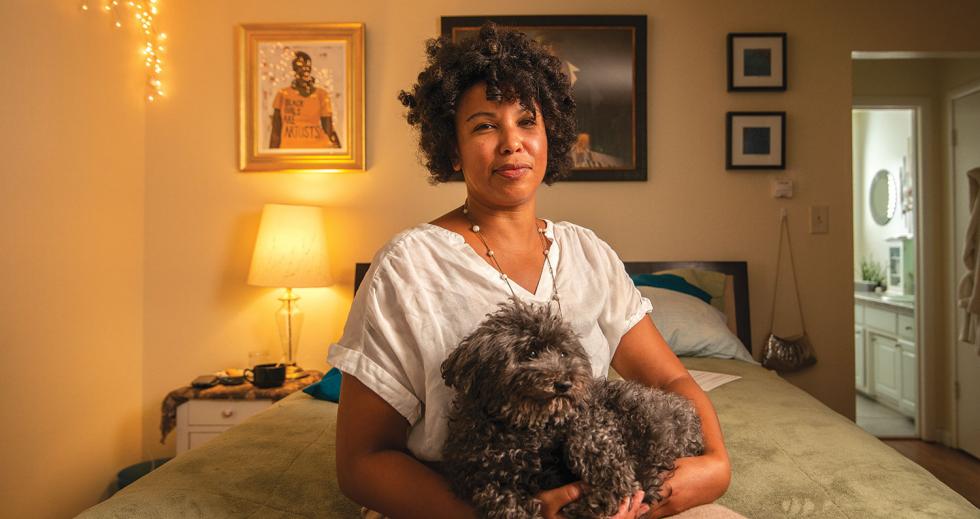
During the town hall, Netters recalled his conversations with the late Grantland Johnson, a former Sacramento city councilman and Sacramento County supervisor and the first Black person to hold the position of Secretary of California Health and Human Services. Johnson, according to Netters, used to say that to most environmentalists, “‘The environmentalist issue is just the Sierra mountains, just the trees.’ He’d say, ‘Truth be told, the environment is where we live.’”
Triggered by Rachel Carson’s landmark 1962 book “Silent Spring,” about the harm caused by the insecticide DDT, America’s modern environmental movement has tackled many laudable causes: the fight for clean air and water, conservation of natural resources, protection of habitat and endangered species, recycling, and the fight to stop global warming, among others. The movement, however, has often failed to elevate the voices of people of color or recognize how many environmental burdens fall disproportionately on disenfranchised communities in a way that affects their health and well-being. In other words, how these burdens affect their daily lives.
One major predictor of health is the ZIP code for the community in which people live. It’s the built environment around us. It’s how close someone resides to polluting factories, landfills and auto shops. It’s the absence of public transportation for easy access to medical services, the lack of trees and parks to lower temperatures and provide opportunities for exercise, and the interstate that cuts through a neighborhood, spewing car exhaust. It’s the prevalence of fast-food restaurants selling processed foods and the lack of grocery stores with fresh produce.
These factors increase the risk for low birth weight, asthma, diabetes, high blood pressure, some cancers and now complications from COVID-19, which kills Black and Hispanic people at much higher rates than white Americans. In these neighborhoods, life expectancy is lowest and rates of incarceration highest.
A 2018 report by the Environmental Protection Agency found that people of color are much more likely to breathe polluted air because of where they live. Specifically, Black Americans are exposed to 1.5 times more particulate matter than white people. Despite overall improvements in air quality across the U.S., the most polluted parts of the country in 1981 remained so 35 years later, according to a recent study. Black Americans are also 75 percent more likely than other Americans to live in “fence-line communities,” those near facilities that produce hazardous waste, according to a 2017 report from the NAACP and the Clean Air Task Force.
Understanding how all this happened requires a look back to the early 20th century, when restrictive covenants in property deeds prevented racial minorities from buying homes or occupying properties in predominantly white neighborhoods. Going hand in hand with that practice, the Federal Housing Administration and banks in the 1930s began denying home loans to people of color in a practice called redlining.
The now-defunct federal Home Owners’ Loan Corporation drew red lines around areas where racial and ethnic minorities lived, deemed those at high risk of default and assigned these areas the worst rating on its metric, a D. Government officials used these maps to help guide planning, and these “hazardous” neighborhoods were more likely to be zoned for landfills and other industrial uses. The A-rated neighborhoods, deemed “best” and coded in green, were where white people lived and were more likely to get parks.
The ramifications of this practice play out today in unexpected ways. A January 2020 study found that communities that were redlined are at least a few degrees warmer than their non-redlined counterparts, as fewer parks and trees means less shade and more pavement, and asphalt traps heat, thereby increasing air pollution and the potential for heat stroke among residents.
On Sacramento’s last rating map (1937), much of the red covers Old Sacramento, downtown, Alkali Flat and Mansion Flats — the old districts, or the “melting pot” of town, as written in the map’s corresponding notes, where in one case it was stated that “Italians predominate but with a sprinkling of Mexicans, Negroes, and Orientals. The subversive character of the population constitutes the area’s principal hazard.” Meanwhile, Land Park, Curtis Park and East Sacramento were given good ratings; decades later, these neighborhoods remain the most affluent and their populations the most white. The Fair Housing Act of 1968 banned racial discimination in lending, although questionable home loan denials and predatory lending continue.
These discriminatory practices limited Black people’s access to credit to pay for home maintenance or to buy homes, one of the most effective ways people can accumulate wealth. A 2013 report by Harvard University researchers examining this long-held argument in favor of homeownership confirmed “the importance of assets in determining life’s opportunities, enabling investments in education and businesses, providing economic security in times of lost jobs or poor health, and passing on advantages to children.” The real-estate brokerage Redfin reports that Black families have averaged about $212,000 less in personal wealth over the past 40 years because of owning a home in a redlined area.
The way American cities have been planned, segregated and invested in also plays out in less overt ways: The quality of sidewalks, location of highways, distance between destinations and proximity of public transit to one’s home can affect a person from childhood to adulthood, says Alicia Brown, a project manager for WalkSacramento, the nonprofit that oversees the local Safe Routes to School Program.
“One of the things we found in working with the Sacramento City (Unified) School District is that transportation is one of the top three reasons why students are chronically absent,” Brown says, which affects these students’ educational attainment and later their adult earnings, thereby also affecting their access to quality health care.
This is what the World Health Organization means when it says, “The social determinants of health are the conditions in which people are born, grow, live, work and age. These circumstances are shaped by the distribution of money, power and resources.” This is also what’s meant by the term institutional racism.
And so the repercussions of how racist policies influenced the built environment have been multigenerational, continuing to compromise the lives of people today in terms of their health and safety, ability to escape the cycle of poverty, and pursuit of the elusive American dream.
Signs of Progress
Over the past few years, the City of Sacramento has begun exploring how to undertake inclusive economic development to help right past wrongs, says Elizabeth Boyd, a senior planner. “The framework of our inclusive economic development is: people, increasing their capacity; the businesses, helping them thrive; and the places, each neighborhood being good to live in.” In other words, she says, “It’s not just success for a few businessmen, landowners, the city — it’s a success that is broad-based.”
“The framework of our inclusive economic development is: people, increasing their capacity; the businesses, helping them thrive; and the places, each neighborhood being good to live in. It’s not just success for a few businessmen, landowners, the city — it’s a success that is broad-based.”
Elizabeth Boyd Senior planner, City of Sacramento
Boyd is project manager of the Stockton Blvd Plan to revitalize the corridor from Alhambra Boulevard to 65th Street, which is about 4.5 miles, includes more than 100 vacant parcels and spans about 10 neighborhoods. The city’s new Neighborhood Development Action Team, in the Office of Innovation & Economic Development, is spearheading the plan, which is expected to go before the Sacramento City Council in 2022.
Cole, of Veritable Good, is a consultant for the project and is assembling a 10-member resident planning group (participants will be paid $50 per meeting). “Stockton Boulevard has sort of emerged as this case study, or at least an opportunity, for us to explore what (equity looks) like,” she says. Cole is engaging multilingual residents and getting the group up and running from the project’s onset, rather than “as an afterthought,” which she says is typically what happens.
Another related case study could be Aggie Square, a mixed-use development project by UC Davis on about 25 acres near its UC Davis Medical Center on Stockton Boulevard, which is projected to provide nearly $5 billion in annual economic impact and 25,000 ongoing jobs, according to the university. Phase one of construction on about 8 acres will begin next year.
Aggie Square is a mixed-use development planned for 25 acres near
the UC Davis Medical Center on Stockton Boulevard in Sacramento.
It’s projected to provide nearly $5 billion in annual economic
impact and 25,000 ongoing jobs, according to the university.
(Rendering courtesy of ZGF)

The newly formed Sacramento Investment Without Displacement nonprofit is asking UC Davis to sign a community benefits agreement that will require the project to provide specific amenities or actions, including hiring local residents, using local businesses as vendors, safeguarding affordable housing and improving access to health care for Medi-Cal patients.
Kim Williams, hub director of Sacramento Building Healthy Communities, a coalition member of the nonprofit, says a legally binding contract is the best way to hold the university accountable and protect the community. The coalition wants to have the CBA in place by the end of this year.
“I also want to make it very clear that none of us feel like this project should not happen,” Williams says. “We believe development and investments in our communities (are) vital. That’s what they need to thrive. But we can’t invest in these communities and then the folks who live there now don’t get the opportunity to benefit from those investments. In fact, they’re harmed by it because they’re pushed out, they’re displaced.”
Kim Williams, hub director of Sacramento Building Healthy
Communities and a member of Sacramento Investment Without
Displacement, speaks at a news conference at Fruit Ridge
Community Collaborative in Sacramento in September to publicly
demand a community benefits agreement with UC Davis for Aggie
Square. (Photo by Sara Nevis)
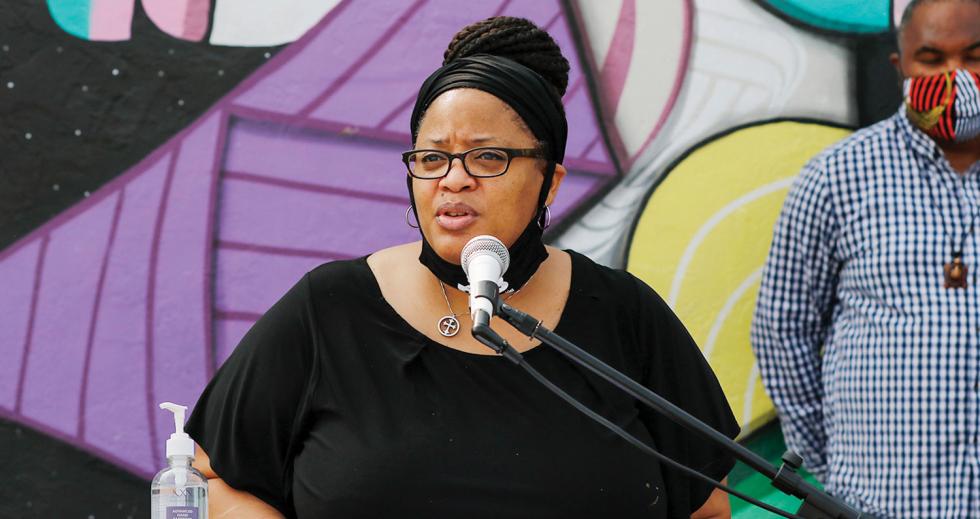
The university would not comment specifically on a potential CBA with Sacramento Investment Without Displacement, but Robert Segar, Aggie Square planning director, did say the university and City of Sacramento are in the process of developing an agreement that will “include more details on workforce development, employment opportunities, transportation and more.”
In terms of improving access to jobs for local residents, university representatives are “participating in virtual job fairs (and) preparing to work with community-based organizations to partner on job preparation skills,” Segar says. Additionally, the more than 5,000 construction jobs created by phase one will “include a strong emphasis on apprenticeships and local hiring from our nearby communities where people are in greatest need. And during this construction period, the Aggie Square project will pilot new job-training programs in whole new industries we plan to attract to Sacramento, such as biomanufacturing.” UC Davis is collaborating with community colleges and industry partners on these programs.
The university’s partnership with the city will, Segar says, “build new bridges to opportunity for our shared community. And the communities around us will have a formal voice in identifying priorities within their neighborhoods.”
For the Stockton Boulevard and Aggie Square projects to be successful, environmental-justice activists say people of color need to be in the room where decisions are made, non-English speakers need a way to have their voices heard, and residents should be paid for their participation in various advisory groups. Additionally, residents need to be given the tools, resources and freedom to implement their own solutions.
Community engagement will also be critical to the success of Sacramento’s air-quality goals and climate plans. In the American Lung Association’s 2020 State of the Air report, the Sacramento area was again ranked fifth worst among major U.S. cities for ozone pollution, a main component of smog. “We’ve been doing work for 25 years in clean air, and (pollution) is a real health risk, especially to the most vulnerable in our population,” says Evan Schmidt, CEO of Valley Vision, a nonprofit civic organization in the Cleaner Air Partnership with the Sacramento Metro Chamber of Commerce and Breathe California Sacramento Region.
“We’ve been doing work for 25 years in clean air, and (pollution) is a real health risk, especially to the most vulnerable in our population.”
EVAN SCHMIDT CEO, Valley Vision
In 2018, South Sacramento-Florin became one of 10 communities statewide in the first round of Assembly Bill 617 designations to receive funding to measure and reduce air pollution as part of the new Community Air Protection Program by the California Air Resources Board. The Sacramento Metropolitan Air Quality Management District has established a steering committee of local residents and businesses to help create the community air monitoring plan, says Grace Kaufman, a project manager with Valley Vision. Sac Metro Air District is working to secure stipends for participants.
In 2019, CARB awarded a $300,000 community air grant to Valley Vision and three partners for their Sacramento Neighborhoods Activating on Air Quality project to empower residents, businesses and schools in parts of north Sacramento and Oak Park to monitor their own air quality, learn about pollution and develop plans to reduce exposure. An advisory committee of residents will guide the project.
“Community engagement is never easy, and it’s never done,” Schmidt says. “It’s always a challenge, and it’s always an intention. … There are conditions that are going on right now — like wildfires, like our housing affordability — that are engaging the community more deeply, and then … there are investments to do it.”
In June, in culmination of an 18-month process, the Mayors’ Commission on Climate Change adopted its final recommendations to achieve carbon zero in Sacramento and West Sacramento by 2045. The commission’s Equity Technical Advisory Committee also developed strategies for equitable outcomes and avoiding harm to marginalized communities. (Pope-Harden, a commissioner, says while the recommendations are “a great start,” the group could have done more to include residents in the process.)
Then, in September, Sac Metro Air District announced another big win for the region with $435,450 in funding from the EPA to monitor air toxins in underserved neighborhoods, specifically hazardous air pollutants emitted by cars and trucks and other mobile sources that have been linked to cancer and other serious health issues. “Air monitoring is such a fundamental piece of the puzzle as we begin to tailor community-centric emission mitigation plans,” said SMAQMD Executive Director Alberto Ayala in a news release.
Additionally, the City of Sacramento will include an environmental-justice element in its 2040 General Plan to be finalized next year. Senate Bill 1000, signed by former Gov. Jerry Brown in 2016, requires cities and counties with disadvantaged communities to incorporate economic-justice policies and goals, such as promoting food access and safe and sanitary housing and reducing pollution exposure. Cole is overseeing a working group of stakeholders, including residents, to help guide the plan.
Pope-Harden applauds the “big push” for community engagement, but she warns that in some ways it can go too far, siphoning energy from the very people who suffer from problems they likely didn’t cause. “It doesn’t take a community meeting in Land Park to know if they should fix illegal dumping or not. So we don’t need to have that in south Sac,” she says. “That’s not equity. Equity isn’t having a public meeting. Equity is making sure our communities are as clean as Land Park.”
She knows these demands all too well, having spent many weeknights in city council chambers and multipurpose rooms. It took years of neighbors talking to neighbors, neighbors talking to public officials, and neighbors talking to lawyers to stop the natural-gas project in her neighborhood. While that battle raged, Sacramento Regional Transit District eliminated a bus route through her Glen Elder neighborhood, which residents spent the next several years getting restored. “We thought, we’re tired,” she says. “What is something we can do for ourselves to help our neighborhood and get to some of the roots of these systemic problems?”
They thought of a place called Morrison Creek. A fenced-off, littered space, its gate locked. A place that for years had been easy to ignore.
Dreaming What’s Possible
Morrison Creek is a tributary of the Sacramento River that runs behind the George Sim Community Center in Glen Elder. Native fish used to swim through this creek on their migration journey. Not far from the creek is the Sacramento Army Depot, a 485-acre base established in 1945 and closed in 1995 that the EPA has listed as a Superfund site because waste disposal practices contaminated soil and groundwater.
Originally, the community just planned to do a creek cleanup. When they learned they could possibly get a grant from the California Department of Water Resources’ Urban Streams Restoration Program, they thought bigger. “Honestly, that was a really hard process,” says Pope-Harden, then-president of the Avondale/Glen Elder Neighborhood Association. “It took the community a long time to actually dream what was possible.” Residents imagined solar-powered benches with charging stations for phones and laptops, a coffee shop in a vacant lot, food stands, bike trails, pedestrian paths, even a petting zoo.
The Sacramento Community Land Trust is helping evaluate options for vacant lots along the creek, says co-chair Rose Cabral (Cole is also on the board). Founded in 2019 as a nonprofit, the purpose of the land trust is to acquire land and maintain ownership permanently, and it gives residents the opportunity to determine what should be done in those spaces, which could be something like an urban farm or a coffee shop. It could also be single-family homes; a land trust still allows homeowners to build equity but with restrictions on how high the sale price can go to preserve affordability and prevent gentrification.
By the end of 2019, the Morrison Creek Revitalization Project had collected feedback from about 300 residents, a true example of community-led engagement. It had attracted funding from big-name supporters, including Kaiser Pemanente, Sacramento Housing and Redevelopment Agency, California Endowment and Regional San, and several nonprofits signed on as partners. In January 2020, in a milestone moment, the project received a $697,000 grant from DWR. But due to the coronavirus pandemic, the Morrison Creek project has stalled.
Pope-Harden is plenty busy with her remote job as a state policy advocate for the nonprofit ClimatePlan, based in Oakland, and is running for a seat on the Sacramento City Unified School District Board of Education in November’s election. While this year has been devastating, she says, it has also affirmed the work she and others have been doing to improve their city.
“I think a lot of social justice has been about seeing a better world and fighting for it against folks who don’t have the same imagination as you,” she says. “When we talked in the past about needing resources for the community, and we were told there’s no money for it, we didn’t have anything to combat that with. Or when we were talking about all the folks that were already on the margin that needed help, it wasn’t given that much energy.”
But she says they are listening now. She used to tread carefully when explaining that something was racist so she wouldn’t make people uncomfortable, but she can be more candid in a “post-George Floyd world,” she says, referring to a Black man killed by police in Minnesota on May 25. In the aftermath of his death and the national protests seeking police reform, more people have been speaking out about the intersection between racial and environmental justice — that they cannot, in fact, be kept apart.
“Police accountability is also about making sure that Black folks are living in a safe environment,” Pope-Harden says. “All organizing groups in some way really link back to what type of environment are we making for these communities?” It was not far from her own home where Stephon Clark, a 22-year-old Black man, was shot and killed by police in 2018 in the backyard of his grandmother’s house in the Meadowview neighborhood.
August and September brought triple-digit heat waves to Sacramento, and record-breaking wildfires through early fall scorched the West Coast, burning millions of acres, killing dozens of people and unknown numbers of wildlife, and causing hundreds of thousands of people to evacuate their homes, fleeing to safety but unable to escape the dense blanket of smoke that hung in the air for weeks.
Roughly 4 million acres have burned across California this year, which is double the previous annual record. An estimated 1,200-3,000 people in the state died between Aug. 1 and Sept. 10 as a result of exposure to the immense amount of wildfire smoke, according to Stanford University researchers. People shared dystopian cellphone photos of the smoggy haze outside their own front doors, and existential dread spread as one climate scientist after another said if you think 2020 wildfires are bad, wait for 30 years from now.
When Nailah Pope-Harden was in her early 20s, she played a key
role in stopping a plan to inject and store 7.5 billion cubic
feet of natural gas underneath homes in her southeastern
Sacramento community. (Photo by Ryan Angel Meza)
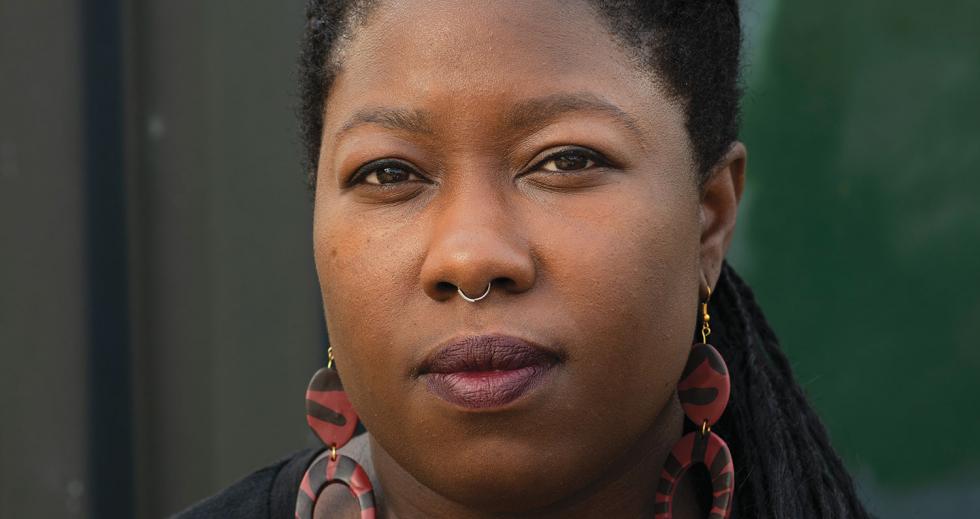
A year and a half ago, Pope-Harden gave birth to a son, Naeem. “Part of me says that I just want to move the needle forward for my son,” she says. “But, at the same time, I don’t want him to be an organizer. I want him to be an artist or a chef or whatever he wants to be and not have to pick up this mantle. I want him to be able to be goofy and quirky and angry in public without that meaning something else.”
“Part of me says that I just want to move the needle forward for my son. But, at the same time, I don’t want him to be an organizer. I want him to be an artist or a chef or whatever he wants to be and not have to pick up this mantle.”
Nailah Pope-Harden Organizer, Morrison Creek Revitalization Project
Pope-Harden pauses to turn on the sounds of nursery rhymes, Naeem making little cries, telling his mother he is ready to be released from the cradle of her arms and put down for his morning nap. “His internal clock is like, ‘Hey, we’re off a little bit,’” she chuckles, before growing serious again, her tone carrying both the hope and burden of a parent determined to leave the world her child will inherit in a better, and safer, state. “I want him,” she says, “to experience the world as freely as possible.”
–
Stay up to date on business in the Capital Region: Subscribe to the Comstock’s newsletter today.
Recommended For You
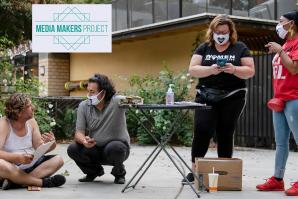
Creating an Impact
Meet some of Sacramento’s advocates working to help others in the community
Comstock’s spoke with five people on the frontlines of making positive change in Sacramento.
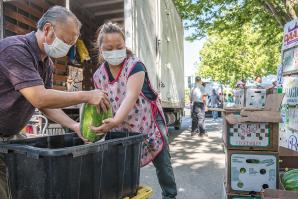
The Bright Side: Harvesting Community
A buyback program is helping microfarmers from the Southeast
Asian community feed families and recoup their losses from a drop
in sales.
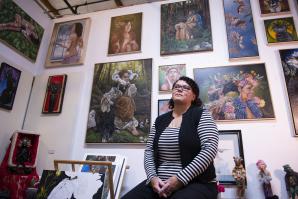
Art Exposed: Laurelin Gilmore
The Sacramento artist’s paintings show a reverence to nature, as she recognizes environmental issues are social issues
Laurelin Gilmore weaves zodiac and earthy elements to show the connectivity humans have to nature.

Leader of the Flock
For years, California has led the way in energy policy — what happens when the federal government shifts course?
It wasn’t taken as a joke or a typo or an anonymous quote from some trolling conspiracy theorist. It was a real-live tweet from a billionaire with mystery hair: “The concept of global warming was created by and for the Chinese in order to make U.S. manufacturing non-competitive.”



